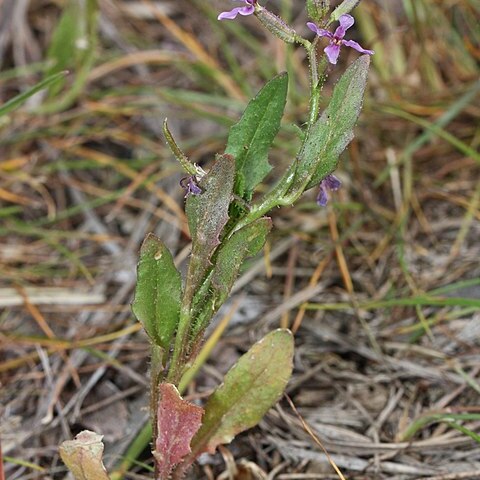Herbs annual or perennial. Trichomes stalked, glandular, mixed with eglandular simple ones. Stems leafy or not. Basal leaves petiolate, rosulate or not, sinuate-dentate, pinnatifid, or pinnatisect, rarely entire. Cauline leaves absent or shortly petiolate, not auriculate, similar to basal ones. Racemes ebracteate, elongated in fruit, rarely flowers solitary on long pedicels from axils of rosette leaves. Sepals ovate, oblong, or linear, erect, base of lateral pair strongly saccate. Petals yellow or purple or lavender, much longer than sepals; blade broadly obovate, obcordate or rarely oblanceolate, apex emarginate or rarely obtuse; claws strongly differentiated from blade. Stamens 6, strongly tetradynamous; filaments not dilated at base; anthers narrowly oblong or linear, obtuse at apex. Nectar glands 2 or 4, lateral, intrastaminal or 1 on each side of lateral stamen; median glands absent. Ovules (5-)10-25(-30) per ovary. Fruit breaking into 1-seeded units, lomentaceous, linear, terete, sessile, slightly to strongly torulose or submoniliform; units indehiscent, with a thick corky or woody wall; replum flattened, persisting after segments fall off; septum becoming corky and splitting at middle; style 1.5-21 mm, beaklike; stigma conical, 2-lobed, lobes decurrent, strongly connivent. Seeds uniseriate, wingless, oblong; not mucilaginous when wetted; cotyledons accumbent.
Sep erect, saccate at base; pet with slender claw evidently longer than the blade; ovary linear, gradually tapering into the slender style; ovules numerous; frs elongate, slightly constricted at short intervals, transversely septate at the constrictions, prolonged into the indurate, subulate style, at maturity breaking transversely into 2-seeded joints; herbs with purple, white or yellow fls. 13, Mediterranean and Near East.

